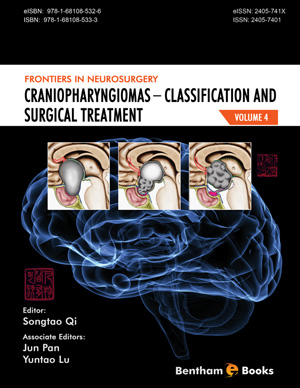Abstract
Craniopharyngioma is a type of epithelial neoplasm that develops in the sellar region, a feature that distinguishes these tumors from other glial or neuronal lesions in the same location. Although the etiology of craniopharyngioma has not yet been confirmed, this type of tumor is generally thought to derive from the epithelial remnants of the craniopharyngeal duct that eventually forms part of the adenohypophysis. In this chapter, we address the pathological classification of craniopharyngioma and its molecular aspects. craniopharyngiomas can be divided into two subtypes: adamantinomatous craniopharyngioma (ACP) and squamous papillary craniopharyngioma (SPCP). ACP is more common (90% of all craniopharyngiomas), particularly among children. ACP features various types of epithelial characteristics such as peripheral palisades, stellate reticulum, whorl-like array cells, wet keratin, and cholesterol clefts. SPCP tumors are found almost exclusively in adults and generally present as solid masses comprised histologically of sheets of well-differentiated squamous epithelial cells, with prominent papillae composed of squamous epithelial cells that grow around fibrovascular cores. ACp contain mutations in CTNNB1, encoding β-catenin: a component of the adherens junction and mediator of Wnt signalling. reported frequency of CTNNB1 mutations varies widely (16–100%). Recently, it was reported that pCps contain BRAF p.V600e mutations in 95% of cases and that CTNNB1 and BRAF mutations are mutually exclusive and specific to tumour subtype.
Keywords: Beta-catenin, BRAF p.V600e, Craniopharyngioma, Molecular mechanism, Pathway, WNT.






















